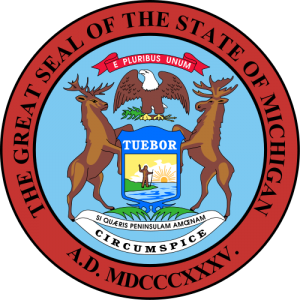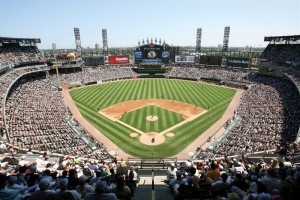 Wisconsin Population 2013
Wisconsin Population 2013
The United States Census Bureau estimates that the population of Wisconsin in 2013 was 5,726,398, which is ranked the 20th largest population in the United States. This estimate shows a 0.7% increase since the last census in 2010, also conducted by the United States Census Bureau. The population density of the state is 105 people per square mile, ranked the 23rd largest density in the United States.
Wisconsin Population Projections
The population of Wisconsin is expected to reach approximately 5.78 million people by the year 2015, which is an approximate 1% increase from the current population. By the year 2020, the population is expected to reach approximately 6.004 million people, which is an approximate 4.8% increase from the current population. By the year 2025, the population is expected to reach approximately 6.2 million people, which is an approximate 8.3% increase from the current population. By the year 2030, the population is expected to reach approximately 6.38 million people, which is an approximate 11.4% increase from the current population. By the year 2035, the population is expected to reach approximately 6.48 million people, which is an approximate 13.2% increase from the current population. By the year 2040, the population is expected to reach approximately 6.496 million people, which is an approximate 13.6% increase from the current population.
Wisconsin Land Mass
The state of Wisconsin is approximately 310 miles long and 260 miles wide with a square area of 66,503 square miles, making it the 23rd largest state in the country. Of the 66,503 square miles, 11,190 square miles are covered by water. The highest point in the state of Wisconsin is Timms Hill, reaching 1,950 feet above sea level. The lowest point in the state is at Lake Michigan, which reaches 580 feet above sea level. The geographic center of Wisconsin is located in Wood County, 9 miles southeast of Marshfield. Wisconsin is bordered by four states: Michigan, Illinois, Iowa, and Wisconsin. Lake Michigan borders the state on the east.
Wisconsin is broken up into five distinct geographic land areas: Lake Superior Lowland, Northern Highland, Central Plain, Eastern Ridges and Lowlands, and the Western Upland. The Lake Superior Lowland is in northern Wisconsin and is made up of flat plains, extending about 20 miles inland from Lake Superior. Northern Highland makes up most of the northern potion of the state. It lies below to the south of the Lake Superior Lowland and makes up about a third of the state. Many forested hills and lakes make up this area. The highest point in Wisconsin is in the state. Central Plain is to the south of the Northern Highland and in the central portion of the state. The Wisconsin Dells is located in the southern part of this area, which is made up of buttes and mesas. The Eastern Ridges and Lowlands are to the east of the Central Plain. This area is made up of rolling hills and the richest agricultural terrain. Lastly, the Western Upland is to the west of the Central Plain. This area lies along the Mississippi River with limestone and sandstone bluffs along the river. Also, the southwestern part of it is home to steeply sloped ravines and winding ridges.
Wisconsin Demographics
Of the approximate 5.73 million people in the state of Wisconsin, about 50.4% of the population is female, while 49.6% is male. Also, approximately 88% of the population identifies as white (including Hispanic or Latino). But, out of that 88%, about 6% do identify as Hispanic or Latino and the other 82% as Caucasian. Those that identify as Black or African American make up only 7% of the entire population of the state of Wisconsin. The rest of the population is made up of those that identify as Asian, American Indian, Alaskan Native, or those that identify as two or more races. These other races make up about 5% of the Wisconsin population.
Wisconsin Religion
The population of Wisconsin identifies as religious at a slightly higher rate than the national average. About 54% of the state population identifies as religious, compared to the national average of 49%. Out of the 54%, about 25% identify as members of the Catholic Church, making it the largest denomination in the state of Wisconsin. The next largest denomination is the Lutheran Church, making up 15% of the population. All the other Christian denominations make up about 13.3% of the population. Those who identify as Jewish, Islamic, or Eastern religions only make up 0.7% of the population.
Dreaming of Fall in Wisconsin
 Wisconsin Sports
Wisconsin Sports
The state of Wisconsin has professional sports in three of the major sports: baseball, basketball, and football. Wisconsin’s team represented in Major League Baseball is the Milwaukee Brewers, located out of Milwaukee. The team plays at Miller Park. Wisconsin’s team represented in the National Basketball Association is the Milwaukee Bucks, located also out of Milwaukee. The basketball center is known as the Bradley Center. Wisconsin’s team represented in the National Football League is the Green Bay Packers, located out of Green Bay. The football stadium is known as Lambeau Field.
Other Resources
There are other resources available for you to learn more about Wisconsin Population Statistics in the following link.
 Minnesota Population 2013
Minnesota Population 2013
 Michigan Population 2013
Michigan Population 2013 Michigan Sports
Michigan Sports Illinois Population 2013
Illinois Population 2013 Illinois Sports
Illinois Sports